Tripatini
the world's smartest travel social network
Following Mahatma Gandhi's Last Steps
My most spiritual tourist experience in India was to visit the home Gandhi was living in for the last four months of his life. The place has been turned into a museum to commemorate his life and his works. Like the man, it is both humble and impressive.
This was the only place in India that has no entrance fee. I was actually looking forward to paying a fee, because the tickets to places like the forts and the Taj make really great bookmarks! However I think the Mahatma would roll in his grave (if he had a grave, more on that later) if they charged an entry fee.
The home, called Girla house, is beautiful and very large with impressive gardens. Gandhi was living here in the first days of India’s independence and contributing to the development of the new constitution.
His bedroom is very simply furnished. A bed on the floor, a writing desk and a little statue of the three see-hear-do no evil monkeys. There is also a spinning wheel for making homespun cloth.
The other rooms in Girla house are covered with dioramas telling the story and philosophy of Gandhi. As you walk down the halls and read them, you notice quickly that they are not in any historical order. They do not really need to be. The story is not one that depends on chronology. It is timeless.
One display shows the story of his assassination. It does not mention the name of the assassin.
There are also multimedia presentations which, being contemporaneous, give a person a much better idea of how stark things were during English rule and afterwards. India was an oppressed country, driven to abject poverty by the English. When the English East India Company took control of India in the 1800’s they made it illegal to export anything from India other than raw materials. This destroyed the Indian textile industries, which is why Gandhi advocated “homespun” as a revolutionary tactic.
The most solemn part of the Girla house is the preservation of Gandhi’s last steps. He was on his way to prayers when he was assassinated. The pathway is marked with raised ceramic footprints, which I suspect are not his size, nor set at his stride. I did not see the little sign that said mere mortals must walk on the path next to his path, not ON the mahatma’s path itself. I got about halfway before I got chased off. But that allowed me to take these pictures for you.
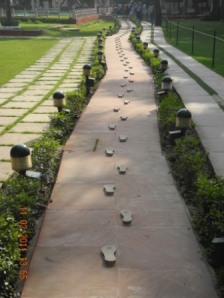
No, I had no right to be on this path. Few men do.
The path leads to the spot where he was assassinated. I have seen where Lincoln was shot, so that is my only comparison. This one seems more special.
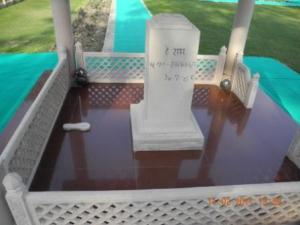
The spot of theassasination that ended the life of the Mahatma. At least the mortal life. His life's work survives, worldwide and hopefully forever. The inscription is the date, and his last words, "Oh God"
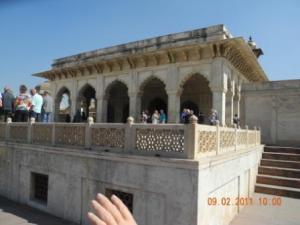
This shrine in the "back yard' of the Girla house is where he was headed to pray with many followers.
As you leave the Girla house there is a shop where they sell homespun cotton clothing. The last thing I need is more clothes, but I was compelled to buy a shirt made of revolutionary authentic homespun. It is quite comfortable and I cherish it.
Across a busy tree lined boulevard is the Gandhi Gaht. This is the spot where he was cremated. Hence, he is not spinning in his grave. This also set in expansive gardens. The simple black marble platform is all the great man needs.
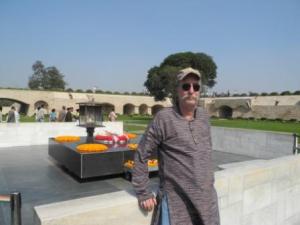
This is me after a long prayer of thanks for not only his work, but the example he left for future generations.
Thanks for reading.
Videos
Groups
-
India
173 members
-
Tour Operators
873 members
-
Ireland
93 members
-
South Dakota
17 members
-
Azerbaijan
17 members
-
Shopping the World
55 members
-
Tech for Travel/Hospital…
87 members
-
Andorra
26 members
-
Online Corner
75 members
-
Minnesota
22 members
-
Backpackers & Hostels
84 members
-
Portugal
60 members
-
Turks and Caicos
26 members
-
Agritourism/Farmstays
72 members
-
Zambia
21 members
© 2025 Created by EnLinea Media.
Powered by
![]()
Badges | Report an Issue | Privacy Policy | Terms of Service
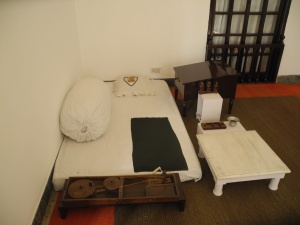
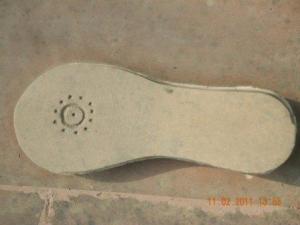
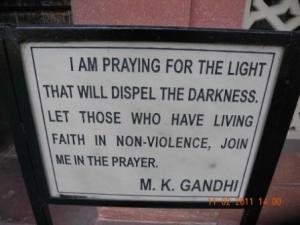
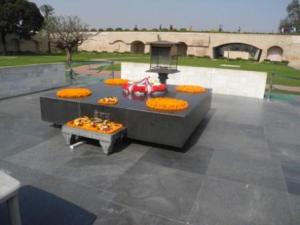
You need to be a member of Tripatini to add comments!
Join Tripatini